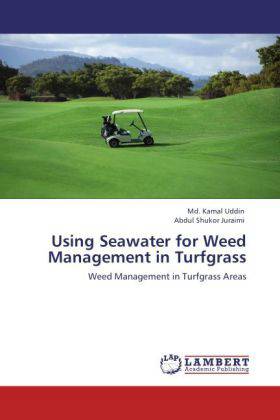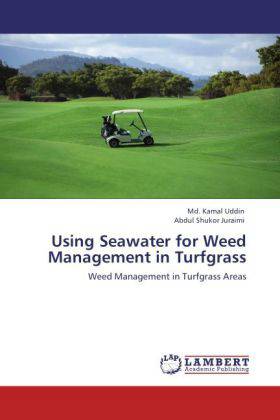
- Afhalen na 1 uur in een winkel met voorraad
- Gratis thuislevering in België vanaf € 30
- Ruim aanbod met 7 miljoen producten
- Afhalen na 1 uur in een winkel met voorraad
- Gratis thuislevering in België vanaf € 30
- Ruim aanbod met 7 miljoen producten
Zoeken
Using Seawater for Weed Management in Turfgrass
Weed Management in Turfgrass Areas
Kamal Uddin, Abdul Shukor Juraimi
Paperback | Engels
€ 77,95
+ 155 punten
Omschrijving
The five most serious weeds viz. Eragrostis atrovirens, Sporobolus diander, Cyperus aromaticus, Cyperus rotundus and Emilia sonchifolia were found to be extremely tolerant, and were not controlled even at the highest salinity level of 72 dS m-1. In the physiological study, three most tolerant and three least tolerant turf species were subjected to seven salinity levels (0, 8, 16, 24, 32, 40 and 48 dS m-1) treatments. Proline concentrations were found to increase with increasing salinity levels. Zoysia japonica was the least Na accumulating at all salinity levels followed by P. vaginatum and Z. matrella, while D. didactyla was the highest Na accumulating species. Paspalum vaginatum always had greater K contents at all salinity levels followed by Z. japonica and Z. matrella. The weed species S. diander, C. aromaticus, C. rotundus and E. sonchifolia except E. atrovirens were fully controlled when treated with 3/4 recommended trifloxysulfuron-sodium with sea water, 3/4 recommended trifloxysulfuron-sodium with 3/4 sea water, 1/2 recommended trifloxysulfuron-sodium with sea water, 3/4 recommended quinclorac with sea water and 3/4 recommended quinclorac with 3/4 sea water.
Specificaties
Betrokkenen
- Auteur(s):
- Uitgeverij:
Inhoud
- Aantal bladzijden:
- 280
- Taal:
- Engels
Eigenschappen
- Productcode (EAN):
- 9783847373896
- Verschijningsdatum:
- 5/03/2012
- Uitvoering:
- Paperback
- Formaat:
- Trade paperback (VS)
- Afmetingen:
- 152 mm x 229 mm
- Gewicht:
- 412 g

Alleen bij Standaard Boekhandel
+ 155 punten op je klantenkaart van Standaard Boekhandel
Beoordelingen
We publiceren alleen reviews die voldoen aan de voorwaarden voor reviews. Bekijk onze voorwaarden voor reviews.











